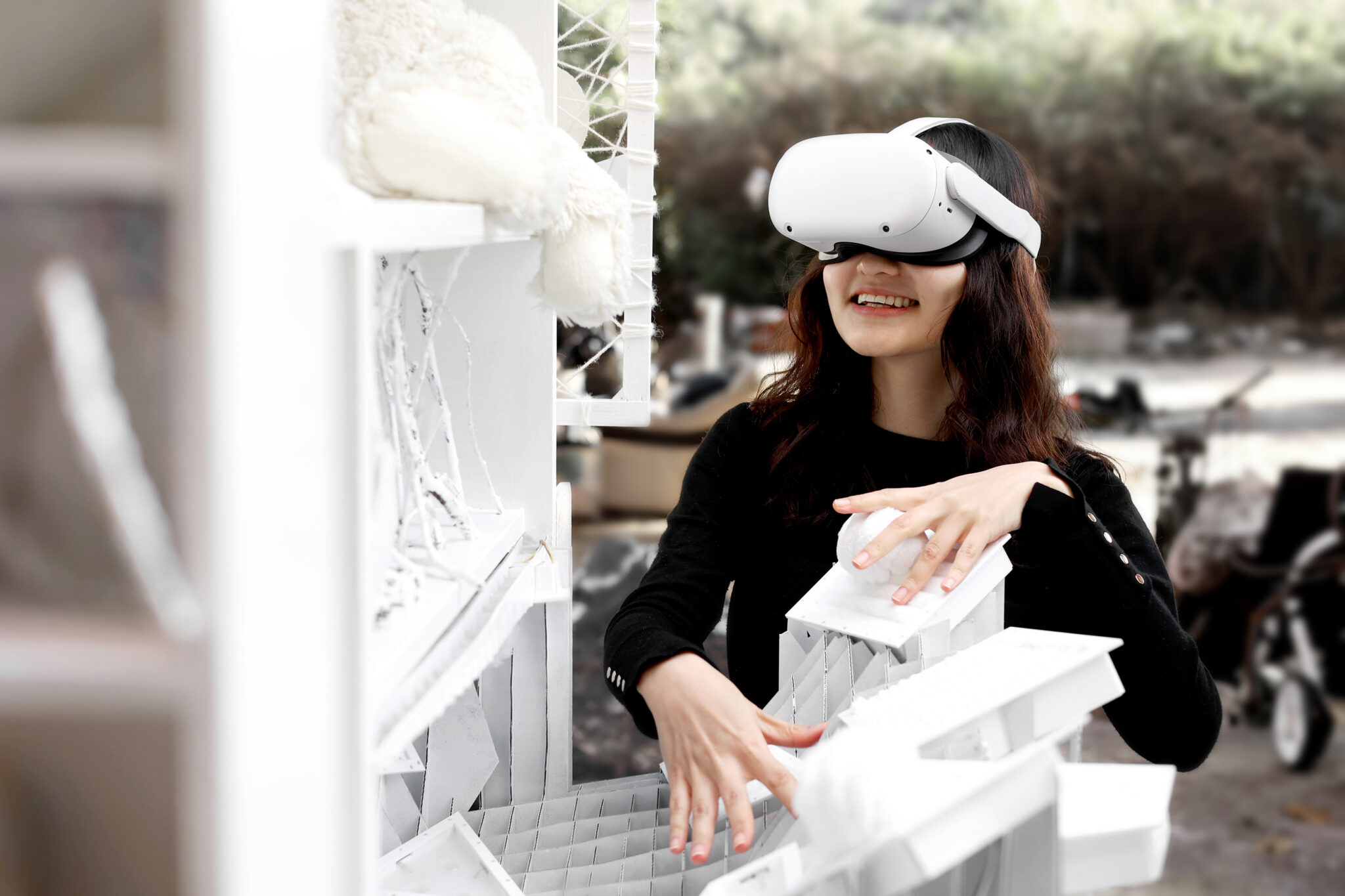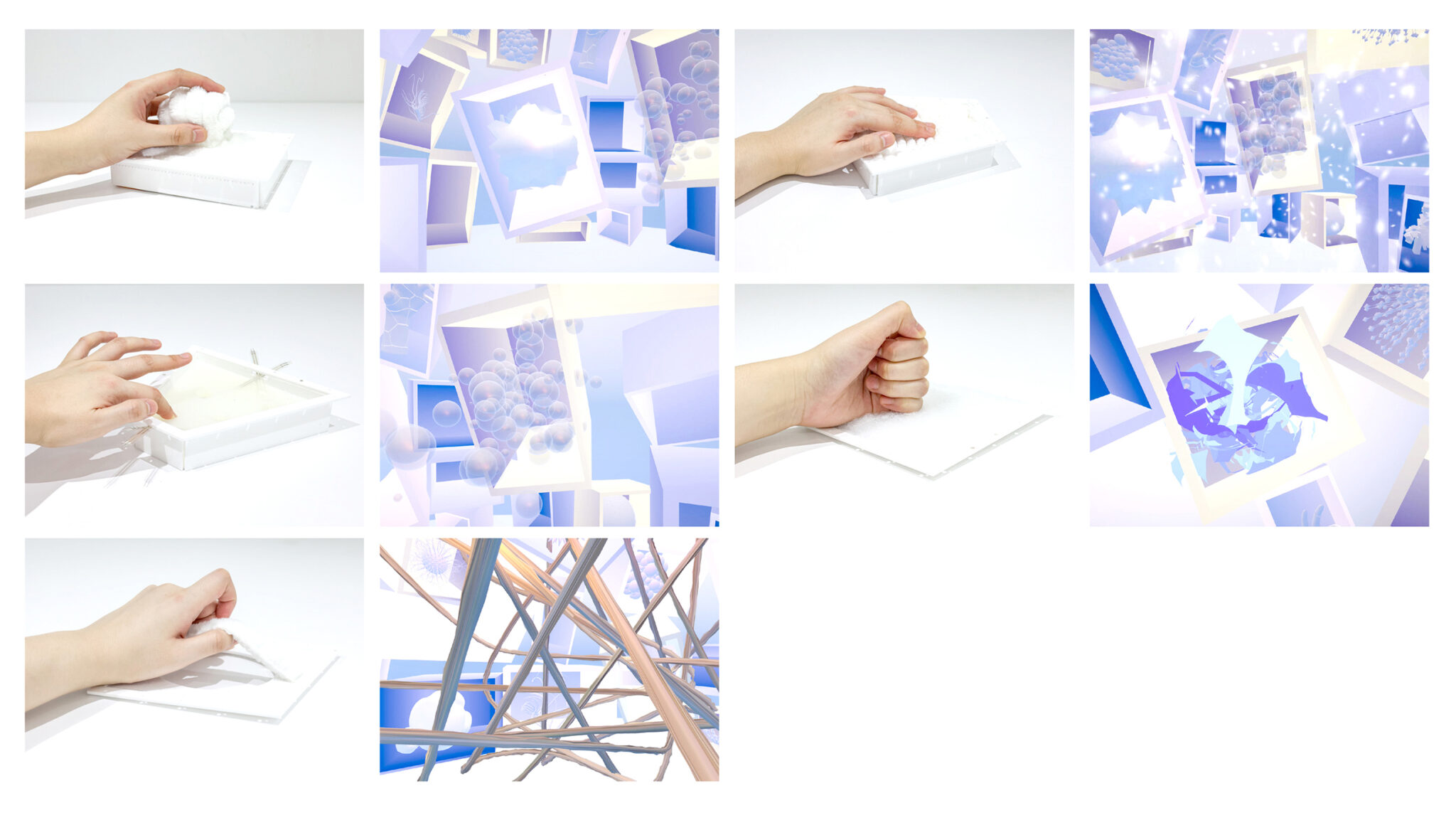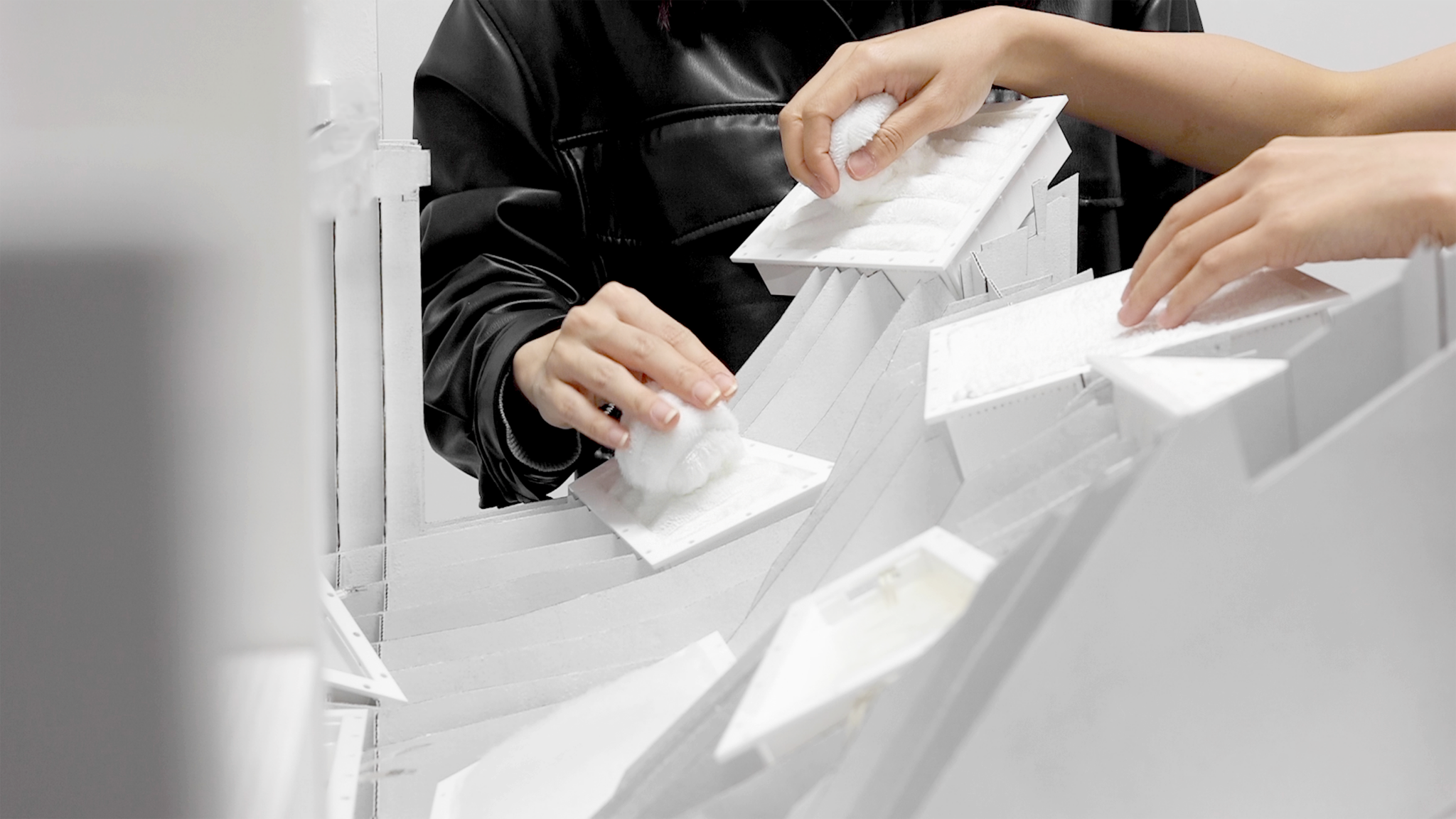In the ever-evolving landscape of digital art, “MetaTouch” emerges as a visually stunning and conceptually rich exploration of touch in virtual spaces. Created in 2022 by the innovative trio of Xiyan Chen, Xirui Yang, and Yilei Guo, this XR installation masterfully bridges the gap between physical interaction and virtual experience, offering a thought-provoking glimpse into the future of human-computer interaction.
The installation’s physical presence is striking – a pristine white structure standing 2500mm tall, housing a “cabinet of curiosities” filled with tactile objects laden with sensory memories. This tangible interface serves as a portal to a vibrant virtual realm, creating a stark visual contrast that metaphorically represents the bridge between our physical and digital realities.
As participants interact with the various modules, they are transported into a mesmerizing virtual dreamscape awash in soothing shades of blue, purple, and pink. This fantastical environment responds dynamically to touch, with each interaction triggering unique visual effects. A gentle pull might result in a graceful growth animation, while a forceful punch could unleash an explosive burst of color and form. These immediate and compelling feedback to the user’s physical interactions, reinforcing the connection between touch and visual response in a way that is both intuitive and novel. The result is a dazzling spectacle that not only engages the eyes but also challenges our preconceptions about the nature of touch in digital spaces.
Beyond its visual allure, “MetaTouch” is a deeply considered exploration of some of the most pressing questions facing our increasingly digital society. The artists’ motivation stems from a keen understanding of the challenges inherent in virtual experiences, particularly the difficulty in establishing connections and empathy in spaces devoid of traditional tactile feedback.
Perhaps most intriguing is the way “MetaTouch” draws attention to how our tactile habits have already been shaped by digital technologies. The artists astutely observe that our interactions with electronic devices have created new patterns of touch and movement, even influencing how we interact with traditional objects. This blending of physical and digital touch patterns speaks to a broader truth: the virtual is no longer a separate realm but an integral part of our lived experience and perceptual memory.
By creating a multi-sensory experience that blurs the boundaries between self and other, the artists offered a potential solution to this empathy deficit. The installation serves as a prototype for how people might enhance the capacity for connection in virtual spaces, using cross-modal features to create a more embodied and empathetic digital experience. Meanwhile, it seeks to break down touch stereotypes and rebuild a new language of tactile interaction suitable for the virtual age. This forward-thinking approach opens exciting possibilities for positive touch experiences in virtual communities, potentially reshaping how we conceive of embodied interpersonal relationships in digital spaces.
In conclusion, “MetaTouch” stands as a visionary work that not only pushes the boundaries of interactive art but also provides valuable insights into the future of human-computer interaction. Its blend of stunning visuals, thoughtful design, and profound conceptual underpinnings makes it a must-see installation for anyone interested in the intersection of technology, art, and human experience. As we continue to navigate the complex relationship between our physical and digital selves, works like “MetaTouch” will undoubtedly play a crucial role in shaping our understanding and expectations of embodied virtual interactions.





